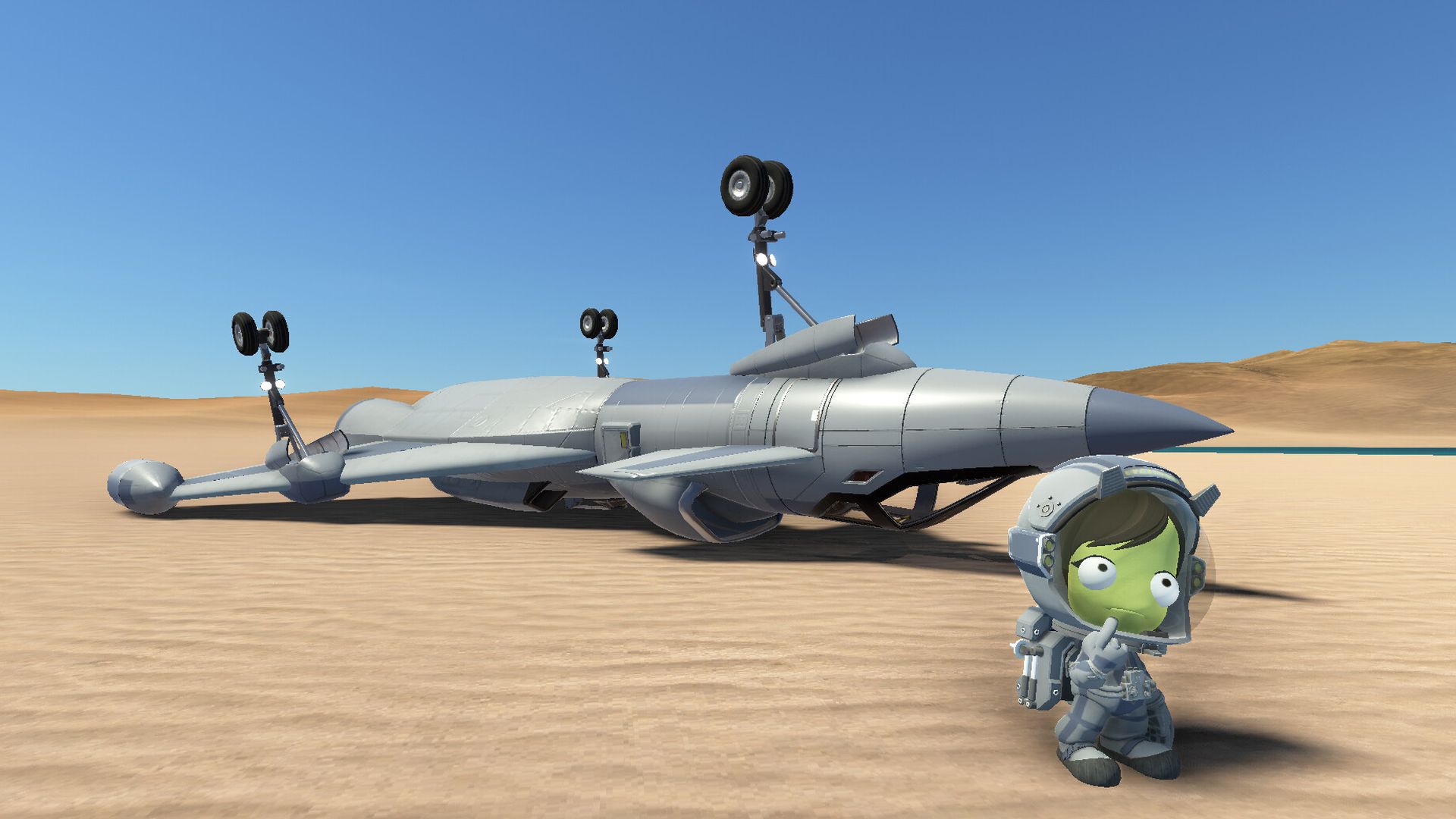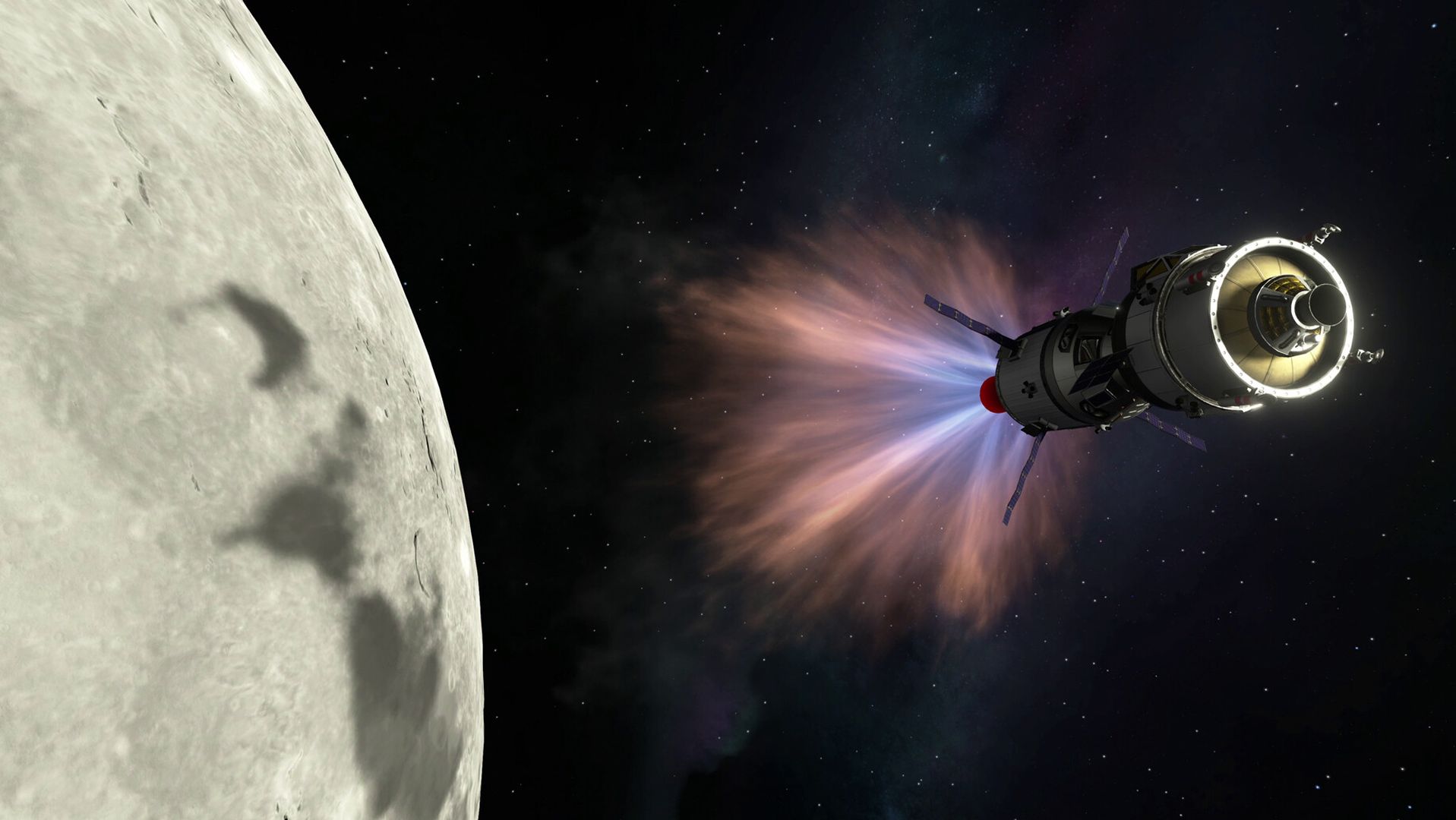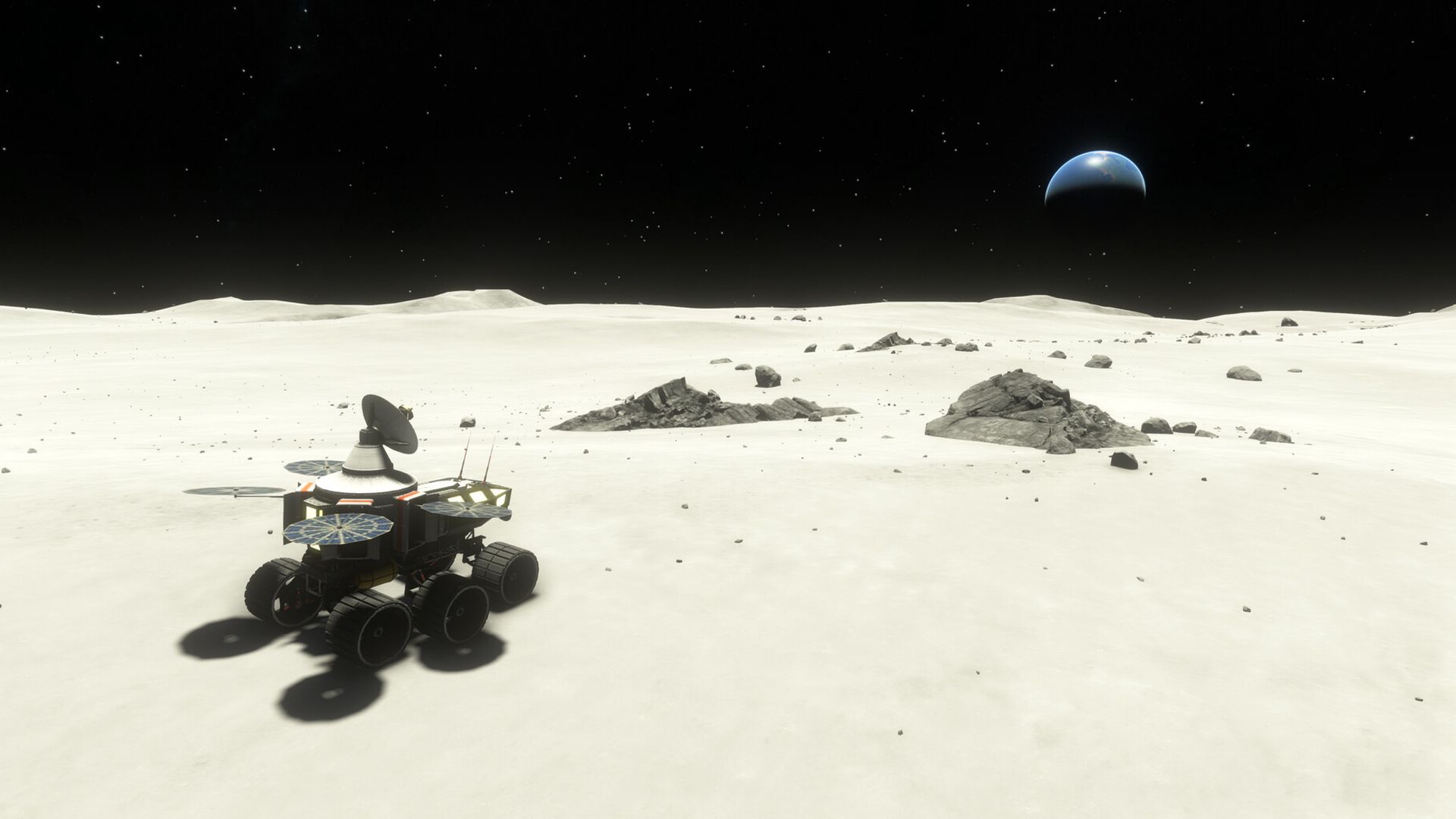
Years ago, I dabbled in relatively early builds of Kerbal Space Program. I don't think I even made it to the moon, but I had fun trying to get there for a while - before realizing I would never reach the very literal heights of some of my fellow players without doing some serious book-learning. Returning, now to Kerbal Space Program 2, I thought I might be able to start more or less where I'd left off, but it was soon clear that wouldn't be the case.
For my first attempt at a rocket, I forgot to take advantage of the building mode's symmetry feature, and crashed immediately into the gantry. After a swift rebuild, I did actually make it into the sky, but failed to either clear Earth's Kerbin's gravity or activate my parachute on the way down, marking a rather unceremonious return to sea-level for my command module and the little green Kerbal inside it.
I was out of my depth, but fortunately Kerbal Space Program 2 comes with a comprehensive tutorial. After running through its first few steps, I was able to get into what one might consider space, even if I still couldn't break orbit. I tried again, and after a few more clumsy attempts, I finally managed to bring my unfortunate Kerbal back to the surface in one piece. A few more attempts, and I was starting to iterate on my early designs, leaning into the trial-and-error and constant learning loop that makes Kerbal Space Program so fascinating. It wasn't long before I had a full, multi-stage rocket, with enough fine control that, for the first time ever, I reached the Moon.
I was traveling too fast, and my Kerbal met another explosive end on its lunar surface, but I'd had the right set of ideas. A little while later, and I was starting to manipulate gravitational fields, pulling myself into orbit around celestial bodies to set up for future missions.
Per ardua ad astra

Kerbal Space Program is one of those games that genuinely fascinates me - an idea so niche that it could only ever miss its mark completely, or embed itself within its intended community so firmly that it could become an enduring part of the furniture; a community you occasionally gaze at in baffled admiration as it achieves things that seem impossible. A decade ago, the thing that pushed me away was the extracurricular astrophysics that seemed to be required reading for those wanting to boldly go, and which my literature schoolwork left no time for. Kerbal Space Program is, as much as a video game can be, literally rocket science, and its sequel builds on that premise with the well-earned confidence of a development team that has spent years honing its craft. In every way that my untested eyes can see, Kerbal Space Program 2 is more polished, more detailed, and more accessible than its predecessor.
But crucially, those eyes are untested. What I was able to achieve was basic in the early 2010s, little more than a bottle rocket compared to what other members of the community were doing even then; deep-space travel, complex docking networks, intricate rescue missions. As much as Kerbal Space Program 2 is a good starting point for new players, with its updated graphics and dedicated tutorial, its real audience is the experts who have spent years with the game already. And those experts aren't particularly impressed.
Dark side of the Mun
Confusion around the development team isn't worth getting into here, but it's something that long-term fans have expressed concern over. Beyond that are more traditional worries about gameplay, graphical performance has raised several eyebrows, especially since wobbly framerates are coupled with some blistering PC specifications. There's no doubt that KSP looks better than its predecessor, but visually it's certainly not up there with the other games I'd expect to need top-end graphics cards just to hit the 'Recommended' settings on. Performance issues are said to be a key focus of the game's early access journey, but a vast swathe of players will be left out at launch as a result of their hardware.
Sign up to the GamesRadar+ Newsletter
Weekly digests, tales from the communities you love, and more
Delve deeper, and there are worries about what's missing from KSP2. At launch, a popular mode that bridges the gap between sandbox and 'Career' gameplay won't be available. Another sticking point is the lack of thermal simulation (protecting your ship from heat from re-entry, engines, or, you know, the Sun), a feature described as a "core facet" of a game like this by one fan. Want to see your Thrust-to-Weight ratio? That's missing too. In fact, an array of features that were present in the original game aren't available. As someone returning to the game after a long time, several of those features seem like the kind of thing it might take me weeks of playtime to even notice. For a brand-new player, lifting off for the first time with Kerbal Space Program 2, it might be even longer before those 'missing' features become relevant.

But while I'd be interested to be proved wrong, I don't think too many brand-new players will be flocking to KSP2. If you had a hankering for astrophysics-as-game-mechanic, you probably have already tried out the original, and bounced on to No Man's Sky if it wasn't for you. For lapsed players, I think it's a great option - the tutorials offer a solid leg-up, and I was surpassing what I'd achieved before within a few hours. The new graphics are familiar, but offer a welcome sense of modernisation.
But the people judging Kerbal Space Program 2 with the keenest and most important eyes are the people who have thousands of hours in the original, and are now finding the ideas they'd learned to take for granted aren't there anymore. Couple that with performance issues on high-end rigs (or PCs that simply can't run the game), no at-launch mod support, and a notable price-hike over the original, and many players are suggesting they simply won't make the jump, at least for now.
I'm reminded, in many ways, of the recent launch of Dwarf Fortress on Steam. One game might send its funky little guys into the bowels of the earth while the other sends them to the stars, but there are a lot of parallels between the two. Existing on the fringes of traditional gaming audiences, hard-as-nails to perfect, wildly complex, but with an audience unbelievably dedicated to the depth of technical details and emergent narrative that both games could churn out, Dwarf Fortress' 'mainstream' arrival was a financial triumph that saw its community turn out in droves to buy the game and celebrate its developers. But to see the Kerbal community eyeing their long-awaited sequel with such skepticism is a concern, even from the outside. Early access can be a long road (a fact that few communities will be as familiar with as Kerbal Space Program's), but Kerbal Space Program 2 seems to be starting an already difficult journey on the back foot.
As Kerbal lifts off, here's a list of more new games 2023 coming out this year.

I'm GamesRadar's news editor, working with the team to deliver breaking news from across the industry. I started my journalistic career while getting my degree in English Literature at the University of Warwick, where I also worked as Games Editor on the student newspaper, The Boar. Since then, I've run the news sections at PCGamesN and Kotaku UK, and also regularly contributed to PC Gamer. As you might be able to tell, PC is my platform of choice, so you can regularly find me playing League of Legends or Steam's latest indie hit.


